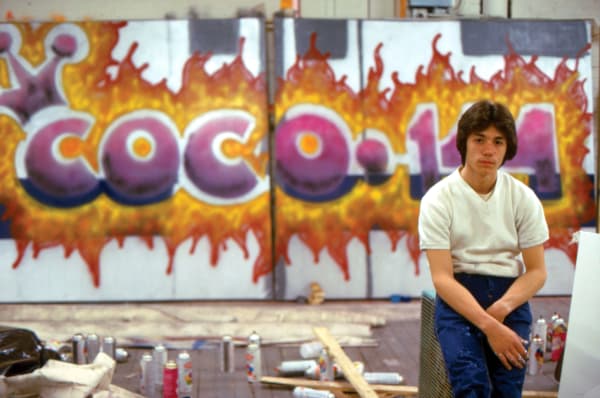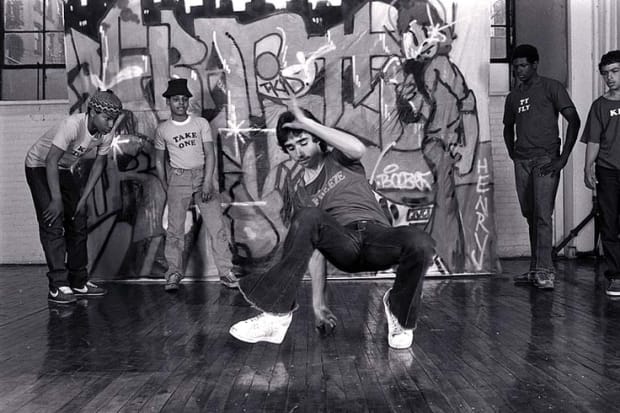-

© Jon Naar
-

© Henry Chalfant
-
 MinOne at City Hall station, 1981, NYC © Henry Chalfant
MinOne at City Hall station, 1981, NYC © Henry ChalfantSpray painting, the medium of choice
From 1973 onwards, street graffiti began to take on the subway carriages and quickly became a competition. At the time, graffiti was mostly tags. Graffiti artists painted as many train interiors as they could between stations. They soon discovered that the maximum number of trains could be painted more quietly in the depots at night, while reducing the risks of being chased and caught.
As New York's metro system was the largest public transport network in the United States, it became a formidable network for communication and the dissemination of graffiti work for the writer community. With over 400 stations and some 65,000 cars, it seemed like a huge territory to conquer. The youngsters' favorite lines at the time were Nos. 2 and 5, which crossed the whole of New York, from the Bronx to Brooklyn, in a circuit that took almost four hours.Organized into groups such as WAR (Writers Already Respected), the writers had their own rules: they advised and helped each other, enabling them to execute graffiti in the metro with a minimum of protection, thanks to collective surveillance. The most initiated writers knew the metro network by heart: its forbidden accesses, its sheds, its depots, the interconnections between lines.
The concept and method for painting the trains were established. Each line had its king. The king was the graffiti artist who painted the most on a given line, and executed the biggest and most beautiful graffiti. Respected by the other graffiti artists, they regularly helped him paint at night.
By 1975, the foundations of the movement had been laid. A new school of graffiti artists was preparing to take over in a ruined city in the midst of a financial crisis. New York was heavily in debt and poor maintenance of its rail system meant that the graffiti movement was the most densely represented across the city in its history. Graffiti artists began working on line thickness and adding color to their lettering. The tips of other aerosol products allowed paint to spread more widely and this led to the creation of the masterpiece. It's hard to say who made the first masterpiece, but it's commonly credited to Super Kool 223 from the Bronx and Wap from Brooklyn. The thick lettering contributed enormously to the artist's visibility. Graffiti artists decorated the inside of the letters! With what were known as "designs". First with simple circles, later with hatching, stars and checkerboards. "Designs" were limited only by the artist's imagination. Many different styles could be seen on the subways: cartoon characters and various illustrations were used to complement the lettering. Each style had its own name: top-to-bottom, block letters, panel piece, whole car, leaning letters, throw-ups, etc. For example, the bubble style was invented by Phase II. A more complex lettering style, called "wild style", was illegible to the general public.Graffiti artists took risks painting at night in the depots, between the electrified third rail and pursuit by the special anti-graffiti police. This didn't stop graffiti artists from expressing themselves and putting their lives on the line. Respect is due to all the generations of New Yorkers graffiti artists, and to the graffiti artists who today perpetuate this practice around the world.
-

The white "anti-graffiti" paint was not as resistant to graffiti as the MTA had hoped.
Prolific graffiti artist "Seen" tagged the train in October 1982. Photo © Steve Zabel -

© Tats Cru, 2016
-

Daze, Bill Blast, Dondi White & A One, 2015, Speerstra Fondation
-

"Chuuuttt" by Jef Aérosol & "Knowledge + Action = Power" by Shepard Fairey, 2019, Paris










